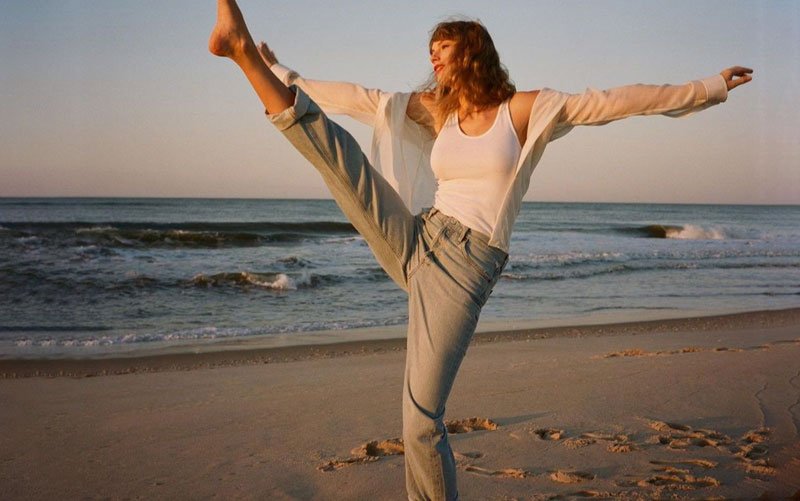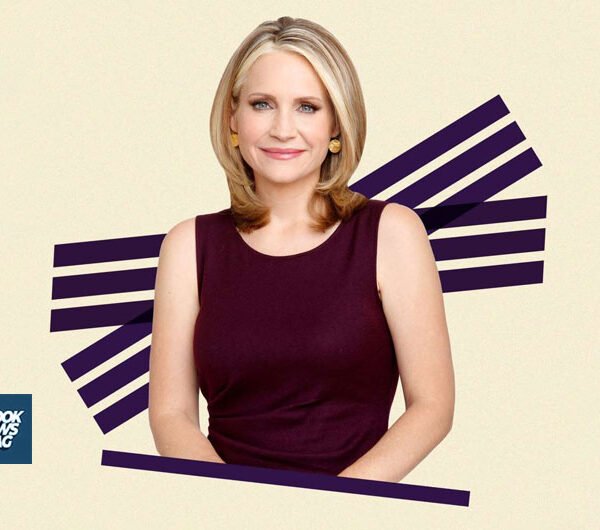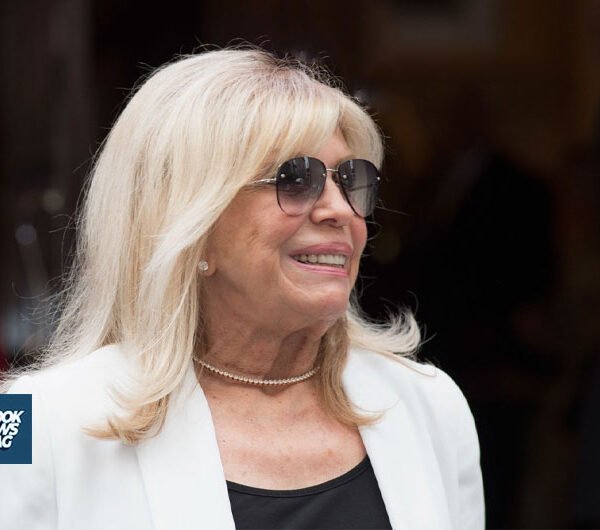From Hollywood to Instagram: The Rise of Social Media Influencers
How Instagram stars and YouTube celebrities are shaping brand growth opportunities through digital word-of-mouth
“Influencer marketing” has become one of the biggest buzzwords of the digital age. But what does it actually mean and why does it matter so much to modern brands? This article will explore the meteoric rise of social media influencers over the past decade and their increasing ability to make or break a brand’s success through their impact on consumer behavior.
Social media influencers have emerged as a powerful new marketing force, combining the wide reach of celebrities with the niche credibility of industry experts. As online platforms like Instagram and YouTube continue to eclipse traditional media in popularity among young demographics, influencer marketing has evolved from an experimental concept to an essential pillar of digital branding strategies for businesses around the world.
This new class of independent taste-makers boast millions of engaged followers who look to them for everything from fashion and beauty advice to travel recommendations and insights on new products. Whereas the endorsements of Hollywood stars once determined the “cool” factor of brands, now anyone with a strong social media presence and creative talent can drive trends and consumer purchasing decisions.
This article will chart the stratospheric rise of social media influencers over the past ten years and analyze how they have come to play a central role in shaping modern marketing through the content they create and curate across digital networks. Their ability to form authentic connections with niche follower bases makes them invaluable assets for brands seeking to organically integrate themselves into cultural conversations and drive targeted sales growth.
By exploring influencer marketing case studies, industry trends, and expert perspectives, we will understand exactly why Instagram stars and YouTube personalities have become such coveted — and heavily compensated — brand partners. We’ll also consider the future of the influencer economy and examine some emerging best practices for managing marketing relationships with internet-famous content creators in an ethical and mutually beneficial manner.
So whether you’re a marketer looking to leverage social media tastemakers or simply want to understand the secrets behind their uncanny influence, read on to navigate the flashy, fast-moving world of influencer marketing.
The Power of Social Media Influencers
Social media influencers wield tremendous power in today’s digital marketing landscape thanks to their ability to shape follower opinions through the content they create and curate. But what exactly makes them so influential compared to traditional celebrities?
The Influence of Social Media Influencers on Consumer Purchasing Decisions
Unlike actors or musicians who earn fame through movies, albums and concerts, social media influencers build engaged niche communities over time by consistently posting content in their area of expertise. For example, fashion influencers on Instagram may repeatedly model and tag looks from their favorite brands while travel influencers document their adventurous vacations around the world.
This consistent creation of lifestyle-relevant content essentially serves as a series of endorsements familiarizing their audiences with specific brands and products. And because followers consider influencers to be trusted taste-makers in their particular niche, they closely reference influencer content for their own purchasing decisions in order to emulate the styles and experiences of the creators they admire.
“Where influencers have traditionally connected with audiences through blogs, Instagram and YouTube have made it exponentially easier to not only reach wider audiences, but also better influence follower purchasing decisions through video reviews and visually-compelling social content.” – Ella Matthews, Influencer Marketing Expert
As a result, brands who strategically partner with relevant influencers can spark massive sales upticks by achieving three key marketing objectives:
- Boosting product discovery and desire through repeated exposure and positive framing in influencer content
- Building trust and affinity for their brand image via associations with influencers their target demographic already knows and likes
- Activating word-of-mouth marketing when followers discuss influencer partnerships and purchase recommendations among their own networks
This unique position at the intersection of content, community and commerce is what makes influencer marketing such a potent force – and so attractive for brands trying to cut through the digital noise.
Social Media Influencers vs Traditional Celebrity Endorsements
So how exactly do influencer partnerships tend to perform for brands compared to traditional celebrity endorsements? While fame levels widely vary on an individual basis, some characteristics inherently differentiate each group.
Table 1. Key Differentiators Between Celebrity Endorsements and Influencer Partnerships
| Celebrity Endorsements | Influencer Partnerships |
|---|---|
| Broad awareness across demographics | Strong niche community connections |
| Perceived as distant “heroes” | Considered trusted “friends” by followers |
| Paid to praise products regardless of personal use | Tend to showcase brands they organically love |
| Short-term campaigns focused on reach | Long-term partnerships focused on resonance |
These differences significantly impact marketing outcomes. While celebrity endorsements may briefly boost general brand awareness, their impersonal sponsored messages tend to generate lower engagement and conversion rates compared to influencers showcasing products contextualized within their daily content and lifestyles.
Furthermore, followers perceive social media influencers to be more authentic brand advocates since they tend to repeatedly showcase products they genuinely enjoy using as opposed to one-off endorsement deals. This fosters crucial influencer marketing wins like driving trial purchases and establishing longer-term consumer loyalty.
Successful Influencer Marketing Campaign Case Studies
Now that we understand the unique advantages of influencer brand partnerships, let’s explore some stellar examples that achieved remarkable results:
- When Benefit Cosmetics launched their “Brow Contour Pro” pencil, they collaborated with over 200 beauty influencers globally who created custom video tutorials and reviews framed around the key product benefits. This campaign generated over 104 million impressions in just six weeks while also boosting Benefit’s overall brand awareness and establishing their positioning as brow experts.
- Tourism Australia partnered with fashion and lifestyle influencers in key travel markets like the U.K. and U.S. to showcase insider perspectives on Australian hidden gems and bucket list activities framed around their “#SeeAustralia” campaign hashtag. They achieved a 14-to-1 return on their influencer investment thanks to the compelling user-generated and experiential content that motivated their target audience’s travel intent and bookings.
- When Daniel Wellington launched their flagship Classic Petite watch model after years of selling NATO watch straps, they sent pre-launch samples to over 1200 micro-influencers in exchange for beautiful Instagram photos showcasing their product aspirational lifestyles. This early influencer seeding strategy established Daniel Wellington as a top watch brand and helped them sell over 1 million watches in just their first two years through consistent influencer partnerships and referral discount codes for followers.
These campaign examples demonstrate how strategically activated influencer marketing can boost product discovery, brand desire and even conversion rates across industries from cosmetics to tourism and accessories.
The Shift to Micro-Influencers
While celebrity influencers with millions of followers capture massive reach, brands have also realized the unique advantages of partnering with relatable “micro-influencers” in their target niche.
The Rise of Micro-Influencers
Micro-influencers are typically defined as having anywhere from 10,000 to 100,000 engaged social media followers. What they lack in breadth, they make up for in depth through their strong connections with niche communities passionate about their area of expertise.
For example, a food blogger focused on tasty gluten-free recipes likely has a smaller but very engaged audience of followers who closely follow their content for meal inspiration and grocery shopping lists. Rather than prioritizing vanity metrics like follower counts, micro-influencers measure their value through indicators like high engagement rates, click-through rates and follower loyalty.
And brands have taken notice. In fact, according to Linqia research, over 92% of marketers say they find micro-influencer marketing effective and plan to increase their investments in 2023.
“Micro-influencers tend to be everyday people who build deep community connections around their special interests and talents. This results in an engaging reciprocity where followers look forward to content updates from micro-influencers they relate with while also providing feedback brands can learn from.” — Marc Choueiri, Founder of the Micro-Influencers Agency
Let’s explore why niche micro-influencers have become the breakout stars of the influencer economy from an audience perspective:
Micro-Influencers vs Celebrities: Why Followers Connect More Deeply with Niche Personalities
| Micro-Influencers | Celebrities |
|---|---|
| Cultivate expertise and intimacy around narrow topics | Generalists who dabble across wide range of subjects |
| Regularly respond to follower DMs and comments | Unreachable behind PR gatekeepers |
| Recommend accessible products from mix of high/low price points | Showcase aspirational luxury beyond reach of most followers |
| Accept and incorporate audience feedback | Dictate trends in one direction to public |
| Relatable personalities easier to bond with | Perceived as living in an isolated celebrity bubble |
This comparison table highlights why micro-influencers can build stronger audience connections rooted in their niche expertise, accessibility and authentic interactions. Since followers consider them real-life friends versus distant celebrities, they pay closer attention to micro-influencer brand mentions and recommendations.
Strategies for Leveraging Micro-Influencers in Marketing Campaign
So what exactly should brands keep in mind when activating micro-influencer campaigns?
1. Define Your Target Niche and Ideal Partnership Profile
Get clear on the specific customer subgroup you want to reach whether that’s suburban moms, college students or busy young professionals interested in healthy meal options. Then create a mapping of relevant interests like cooking methods, diet types, grocery brands and meal kit services popular with that group and identify micro-influencers creating high-quality content around those topics. This will allow you to pinpoint just the right influencers already embedded your target niche rather than wasting effort with broad lifestyle bloggers misaligned with your goals.
2. Prioritize Engagement Quality Over Follower Quantity
Vet potential partners not simply by their follower count but rather audience quality metrics like likes, comment rates and clicks on affiliate links. Micro-influencers with just 20,000 highly engaged cooking enthusiasts often drive better campaign results than food bloggers with 100,000 passive followers. Tools like SocialBlade or HypeAuditor can help analyze audience quality .
3. Activate Multi-Influencer Campaigns
While celebrity influencers have individual fame, there is power in numbers with micro-influencers. Partnering simultaneously with multiple micro-influencers allows you to saturate a niche from different angles. For example, collaborating with 10 gluten-free bloggers located across different regions to share unique localized perspectives ultimately extends your reach and resonance with target consumers.
In summary, micro-influencers should be an essential part of your overarching influencer marketing strategy thanks to their credible sway over niche audiences. By taking the time to identify and activate just the right partners tailored to your goals, brands can cut through the digital noise to boost campaign performance.
Now that we have covered larger celebrity influencers versus rising micro-influencers, our next section will explore how Instagram has uniquely contributed to the influencer marketing boom.
The Role of Instagram in Influencer Marketing
With over 1 billion monthly active users sharing over 100 million photos and videos daily, Instagram dominates the influencer landscape as the most strategic platform for brands seeking visual storytellers to promote their products and services creatively to mass audiences.
The Dominance of Instagram as a Platform for Influencer Marketing
A few key advantages make Instagram the ideal launchpad for aspiring influencers as well as established creators looking to expand their authority:
Intuitive Visual Storytelling Capabilities – Instagram’s built-in editing tools, filters and Story features allow everyday users to polish and share professional-quality photos and short videos that capture followers’ attention.
Viral Content Distribution – The Instagram algorithm surfaces and recommends popular posts from accounts users don’t even follow yet based on their interests. This allows standout content to organically reach well beyond just existing followers and go viral.
Shoppable Product Tagging – Instagram Shopping features like shoppable posts, product tags and affiliate capabilities allow influencers to seamlessly convert discovery and inspiration into transactions.
Robust Analytics – Instagram Insights provides creators with powerful analytics like top-performing posts, audience demographics, impressions and engagement rates to refine their content and partnership strategies.
Essentially, Instagram removes hurdles like expensive equipment or video editing experience that historically blocked everyday people from launching influencer careers. It also provides monetization opportunities for them to earn income from the content passion projects and personal branding ladders they build—making it an incredibly attractive platform for ambitious creators.
Analysis of Top Instagram Influencer Categories and Industry Impact
From lifestyle bloggers to health experts and travel photographers, Instagram’s multifaceted features have minted social media stars across every category who actively shape their respective industries:
Fashion Influencers – Style icons like Aimee Song (@SongofStyle) and Chiara Ferragni (@TheBlondeSalad) attract millions of followers to their OOTD (outfit-of-the-day) photos modeling the latest designer looks, effectively replacing fashion magazines as trendsetters. Their stamp of approval directly impacts brand desirability and fashion week show attendance.
Beauty YouTubers – Former professional makeup artists like Huda Kattan (@HudaBeauty) and influencers like James Charles (@JamesCharles) became beauty moguls themselves by leveraging YouTube tutorials and Instagram transformations showcasing cosmetics application techniques, reviews of new products and advertising their own makeup lines. Their endorsements make or break multi-billion dollar cosmetic brands.
Fitness Motivators – Athletic influencers like Kayla Itsines (@KaylaItsines) and Joe Wicks (@TheBodyCoach) attract worldwide fanbases to their Instagram profiles featuring exercise tips, workout videos and health coaching services. The products and supplements they use to achieve fit physiques influence follower purchasing and dieting decisions.
Clearly, Instagram has transformed regular people into ultra powerful industry heavyweights based on their ability to engage millions of dedicated niche followers daily. By now activating Instagram’s built-in shopping and analytics tools, they are both influencing and directly monetizing brand decisions through strategically crafted social content and calls-to-action.
Best Practices for Brands to Effectively Partner With Instagram Influencers
So how exactly can brands leverage Instagram’s unique platform strengths and influencer network power?
1. Utilize Hashtags to Discover Relevant Influencers
Search industry and branded hashtags like #TravelWanderlust or #Sephora to identify top influencer posts popping up. Vet their alignment with your brand values, engagement levels and creativity to curate an initial list of promising partners.
2. Analyze In-Depth Insight Metrics Before Reaching Out
Study their historical analytics instead of just vanity metrics using free tools like Inflact. Look for consistent high-quality content driving engagement and low follower churn rates signaling an authentic and loyal community.
3. Lead With Value During Influencer Outreach
Avoid demanding advertising requests right away. Start by complimenting standout content they’ve created and offering personalized ideas tailored to their brand for potential future collaborations focused on utility for both their followers and your brand.
By leveraging Instagram’s unparalleled influencer marketing tools and networks powered by compelling photo and video content, brands can achieve new levels of authenticity and creative storytelling potentially resonating far beyond their own followers alone.
Collaborations Between Influencers and Brands
Now that we’ve covered the unique marketing powers of social media influencers along with the platform strengths of Instagram, let’s explore exactly how brands typically collaborate with influencers to mutual benefit.
The Nature of Influencer and Brand Partnership Dynamics
Modern influencer collaborations go far beyond the transactional days of simply slapping a product into the background of a Instagram post with a coupon code and hoping for the best.followers
Today, strategic partnerships aim to provide value to both the influencer’s audience and the brand itself. Examples include:
Original Content Creation – Brands may hire influencers to concept and produce unique content like YouTube videos or TikTok dances framing products in an educational or entertaining light to engage their niche following.
Paid Media Amplification – Beyond organic influencer posts, brands often negotiate usage rights to deploy the user-generated content across their own social channels or even traditional advertising to maximize reach.
Product Placement – Sending new item samples to established influencers allows brands to achieve repeated exposure and performance feedback from trusted voices their demographic looks to for recommendations.
Affiliate Programs – Sharing tracking links and coupon codes allows influencers to monetize the conversions driven by theirfollower purchases. Brands only pay for performance, making it a risk-free promotion channel.
Ambassador Programs – Committing to longer-term arrangements with brand ambassadors ensures ongoing prioritization while granting exclusivity benefits back to standout influencers within their category.
This diversity of partnership levers makes it crucial for brands to clarify objectives, nail partner targeting and lock down agreements to optimize ROI.
Influencer Marketing Impact on Brand Awareness, Consideration and Sales
When activated thoughtfully across relevant creators, influencer marketing can provide measurable impact throughout every stage of the modern purchasing funnel according to Rakuten Marketing research:
- Brand Awareness receives an average lift of 5.7x from influencer content.
- Product Consideration improves by 6.7x on average basis influencer recommendations.
- Sales conversion rates from influencer content outperform traditional advertisements by 3x thanks to strengthened consumer trust and affinity.
Furthermore, their data indicates that for every $1 a brand spends on influencer partnership fees, they generate an average return of $5.20 thanks to amplified credibility and word-of-mouth ripple effects.
Clearly, collaborating respectfully with credible social media voices presents lucrative revenue growth opportunities for brands while allowing influencers to monetize their personal brands and reward their loyal supporter base with discounts.
Successful Examples of Diverse Influencer Campaigns
Let’s explore a few stellar influencer marketing campaign examples yielding remarkable results:
1. Daniel Wellington Watch Brand Campaign
This previously featured luxury watch startup leveraged 1200+ micro-influencers across Instagram and blogs to drive spectacular rise from unknown brand to selling over $200 million by their fifth year through consistent social content seeding. Their heavy usage of influencer promo codes also incentivized vital user-generated awareness, reviews and referrals for scaling globally.
2. CVS Beauty Mark Influencer Program
The American pharmaceutical giant launched dedicated beauty influencer partnerships promoting their top in-house cosmetic brands like Revlon, Physicians Formula and L’Oreal. Over 1000 creators helped generate 500+ million campaign impressions while driving significant in-store and online sales thanks to localized promotions of CVS as a beauty destination.
3. #TasteOfAloha Hawaiian Airlines Campaign
The airline boosted bookings to Hawaii by over 34% after inviting food and travel influencers from target North American cities to experience destination food tours, resorts and adventure packages. In exchange, participants promoted custom booking codes and creatively showcased the island from a visitor POV across blogs, Instagram, Facebook and Twitter driving wanderlust and intent to purchase desired flights.
These examples reinforce how brands big and small across any category can tap into digital word-of-mouth marketing and ignite growth by collaborating respectfully with relevant influencers to showcase aspirational realities powered by their products and services.
The Future of Social Media Influencers
Given how rapidly the influencer marketing industry continues to professionalize and integrate into mainstream advertising budgets, what could the future hold for this relatively new field?
Predictions for the Evolution of Influencer Marketing
We are likely still just scratching the surface of the creative potential lyings within content creator collaborations. Here are a few directions we may see the industry expanding toward:
Micro-Influencers Rising – As audience trust declines for mega internet celebs, brands will redirect more funds to credible niche partners. There is also major potential to activate passionate loyalists as long-tail brand advocates.
YouTube Colonizing TV – Streaming viewership has outpaced cable. As experiential videos keep winning eyeballs, YouTube influencers may displace conventional commercials.
Battles for Top Talent – We’ll likely see bidding wars amongst brands seeking to lock up exclusive deals with the most influential voices in key sectors as competition for prime influencers intensifies.
Influencer Multiverses – Virtual, augmented and mixed reality integrations could allow influencers to create more immersive branded worlds through technologies like virtual stores and enhanced try-on capabilities. Followers could also attend digital meet-and-greets with creators or even interact with their avatars projected in real world settings.
Rise of Educational Content – Followers may begin assessing influencers less by glamour and more around substantive authority like teaching specialized skills through online courses. Useful knowledge could become the hottest new commodity social media credibility is built on.
Tighter Data Integration – As attribution modeling improves, brands can better track the customer journey to precisely value each touchpoint. This will optimize influencer spending and unlock more campaign iterations to build upon successes.
We stand on the cusp of a creative marketing revolution as strategists recognize social media creators shape audience beliefs and behaviors more than traditional media. It seems certain the most forward-thinking brands will continue forming ever-deeper symbiotic relationships granting influencers greater authority to shepherd target demographics.
Ethical and Legal Considerations for Influencer Marketing
Despite its meteoric growth and perceived glamour, influencer marketing still requires careful navigation to avoidpitfalls jeopardizing credibility for both individual creators and brand partners.
By establishing industry standards, abiding by transparency regulations and building authenticity with followers, the influencer space can continue maturing from its experimental infancy stage into an ethical and sustainable facet of the modern marketing landscape.
The Role of Authenticity and Transparency Between Influencers and Followers
The open transparency of social media cuts both ways – just as influencers showcase aspirational realities to audiences, followers also notice signs of inauthenticity that erode credibility.
Followers analyze everything from the comment responses influencers provide, brands they associate with multiple times, actual utility of product recommendations and even editing tricks used to polish Instagram perfection.
When the primary currency between creators and their community is trust, consistency and authenticity remain key to preserving this mutual value exchange central to long-term influencer marketing success.
This makes transparency also crucial for any paid partnerships. Financial relationships should be clearly disclosed according to regional regulations so followers can distinguish paid brand collaborations from a influencers’ organic recommendations. When properly communicated, most followers understand that just like them, influencers also need to earn income to sustain their content creation careers.
FTC and International Regulatory Guidelines Around Influencer Sponsorship Disclosures
To protect consumers from deceptive marketing tactics and hidden persuaders, regulatory agencies now mandate clear sponsorship designation based on material connection.
For example, influencers in the U.S. must adhere to Federal Trade Commission (FTC) guidelines requiring clear and conspicuous disclosure of paid partnerships, gifted products or incentives connected to endorsed brands using unambiguous terms like:
- #Ad, #Sponsored
- Paid partnership with [Brand]
- Thanks to [Brand] for gifting me this product
Furthermore, some countries take an even firmer stance with designated sponsorship tags, product labels and repost disclosures to highlight altered reality and avoid misleading endorsement impressions.
Brands must also insist influencers properly disclose the material terms and connection of their collaborations or risk penalties for non-compliance. This ensures followers make informed decisions knowing whether a recommendation is purely editorial or connected to compensation.
Above all, the wisest influencer marketing partnerships aim to be allies not disruptors in the relationship between creators and their communities. Open transparency ensures collaborations align to audience interests rather than distract from them.
The Mutual Value of Ethical Influencer Marketing
Ultimately win-win relationships aligned towards mutually beneficial outcomes tend to sustain growth for all stakeholders. The most successful modern influencer and brand partnerships fuse both the passion of creators with the innovation of companies to build communities not just make sales.
When this foundation exists, ethical influencer marketing carries the potential to achieve exponential impact exceeding isolated efforts. The whole becomes greater than the sum of parts.
Through their creative talents and distribution powers fused with brand assets and resources, collaborative marketing helps progress industries, reshape pop cultures and advance causes benefiting society as a whole.
Conclusion
To summarize, this deep dive into the meteoric rise of social media influencers revealed how profoundly internet-famous individuals with mass engaged followings can influence modern branding opportunities.
We charted the stratospheric growth of influencer marketing from experimental infancy stage into a multi-billion dollar industry interwoven into the digital strategies of leading global brands across every category.
Furthermore, we explored how platforms like Instagram and YouTube combined with smartphone ubiquity unlocked infrastructure allowing anyone to potentially launch standalone media empires and consumer goods brands attracting millions of loyal followers.
Celebrities always captured fascination as the ultimate trendsetters. However meme culture and bespoke content channels paved the way for niche micro-influencers to also captivate mainstream mindshare through the credibility of expertise.
These social media personalities have in essence emerged as the next generation of celebrity – compressed into accessible friends whose lives and recommendations provide daily inspiration for purchasing decisions, travel planning, fashion and more.
For marketers and brand builders, the implications are profound thanks to influencers’ unrivaled capacity to organically embed products into cultural conversations through the content they create and curate across digital ecosystems.
Instagram shopping integrations, viral hashtags and affordable digital video equipment have also removed nearly all barriers separating everyday people from launching lucrative full-time influencer careers.
Looking ahead, creators and companies still have vast creative terrain to explore in fusing their distinctive strengths towards delighting mutual audiences while achieving shared business objectives. Savvy brands who learn to respectfully tap into digital word-of-mouth and ride cultural currents stand to win big in an increasingly competitive, noisy and attention-deficient marketplace.
One certainty persists – the spotlight and profits will flow toward those innovative enough to leverage communities and influence rather than just buy eyeballs. The brands daring enough to authentically empower cultural currents stand ready to dominate the next era of marketing.











